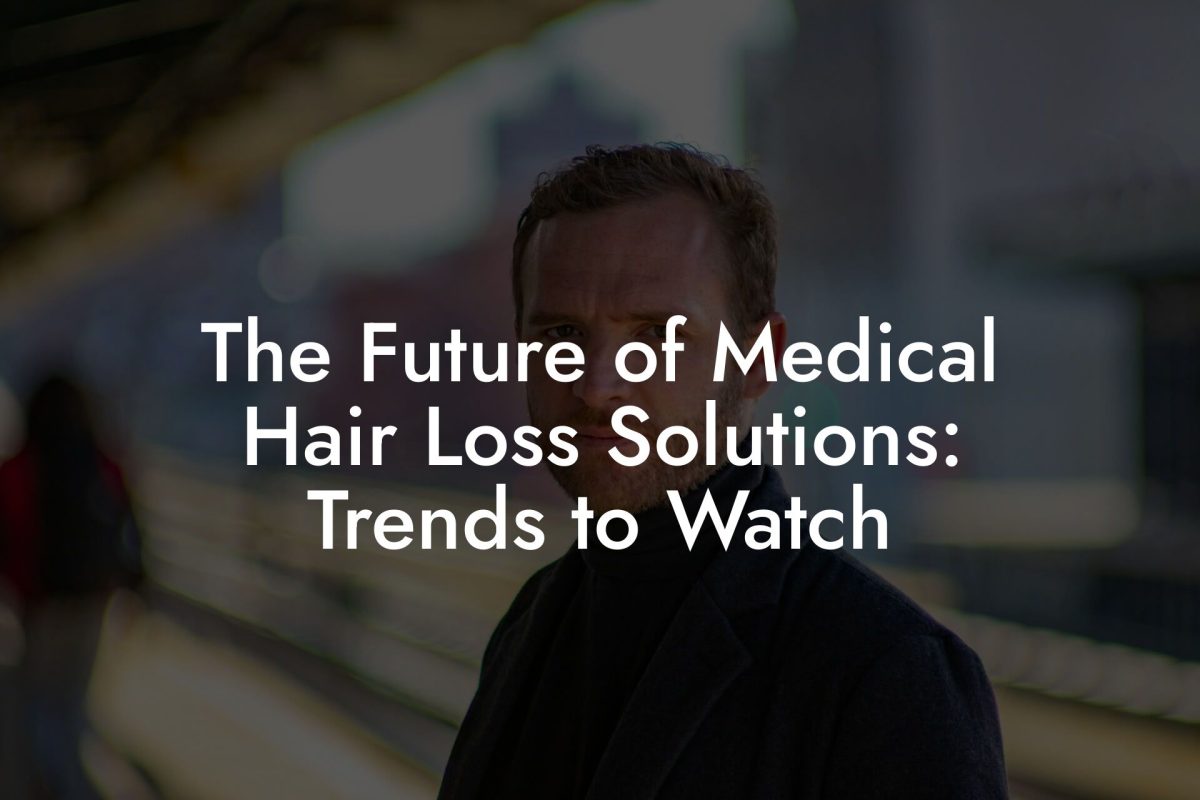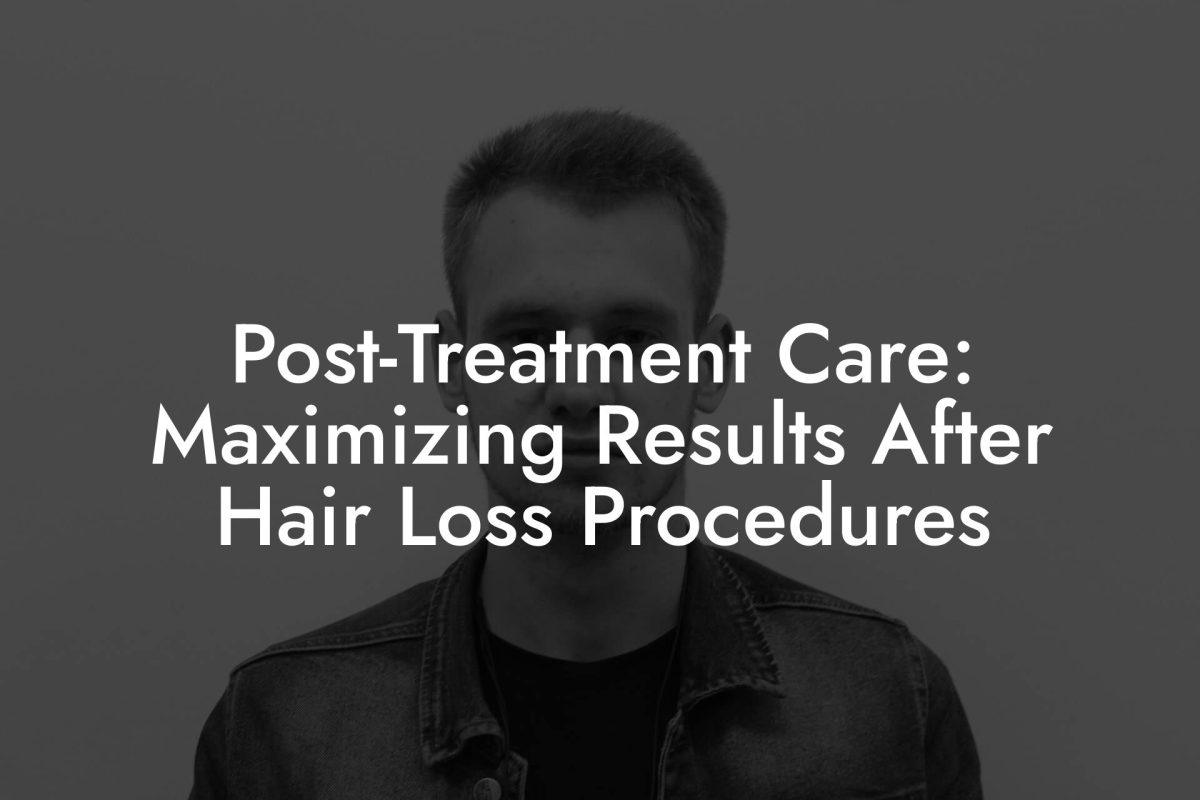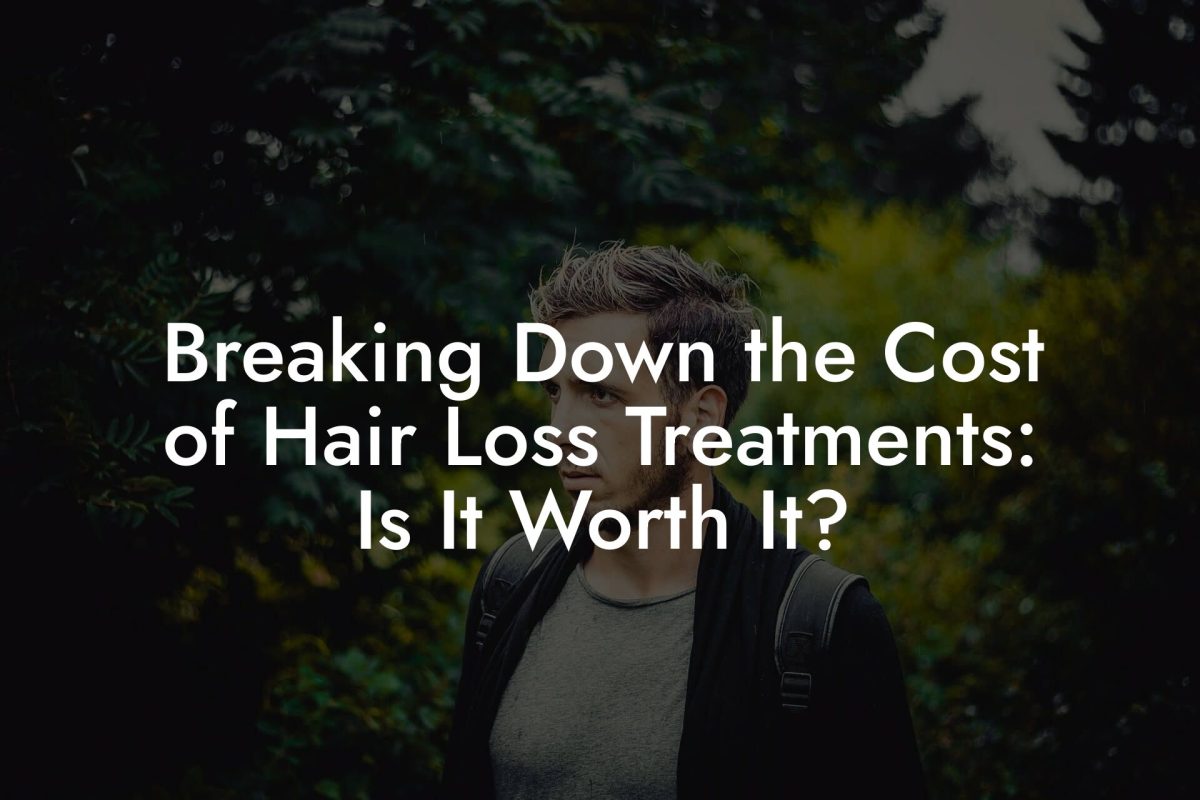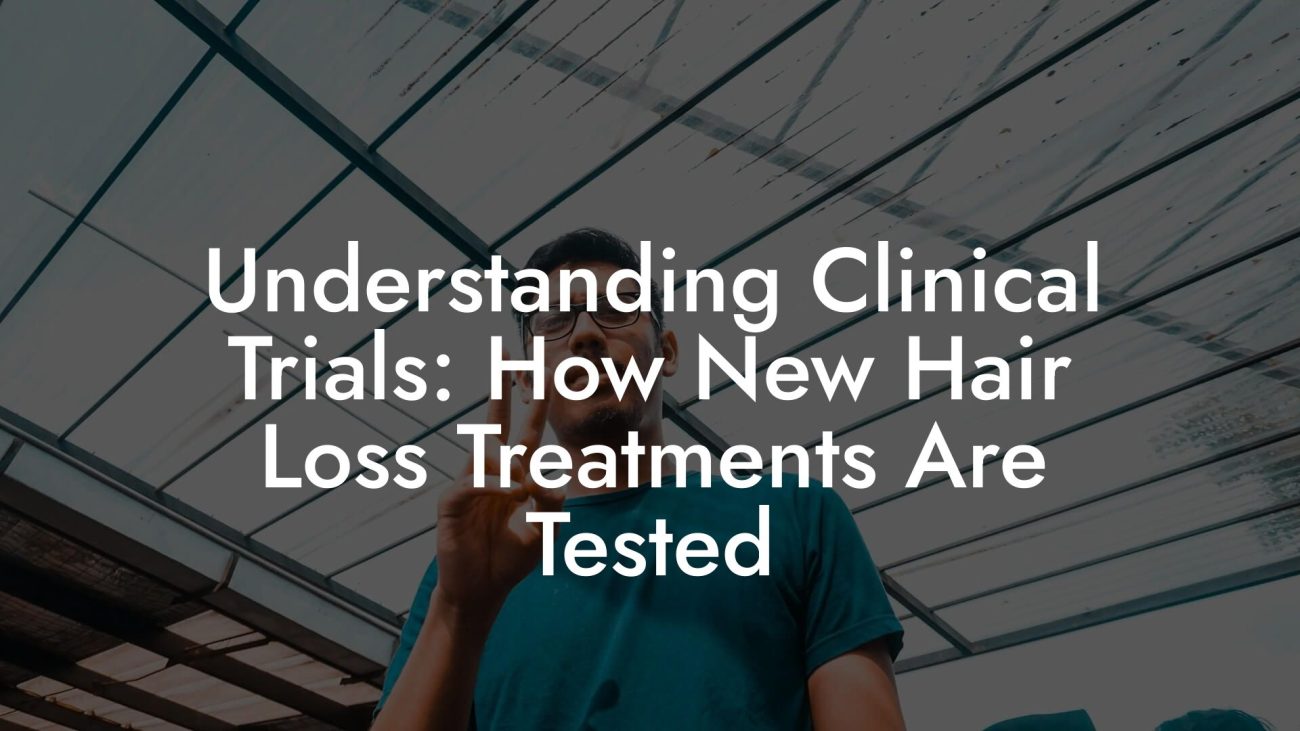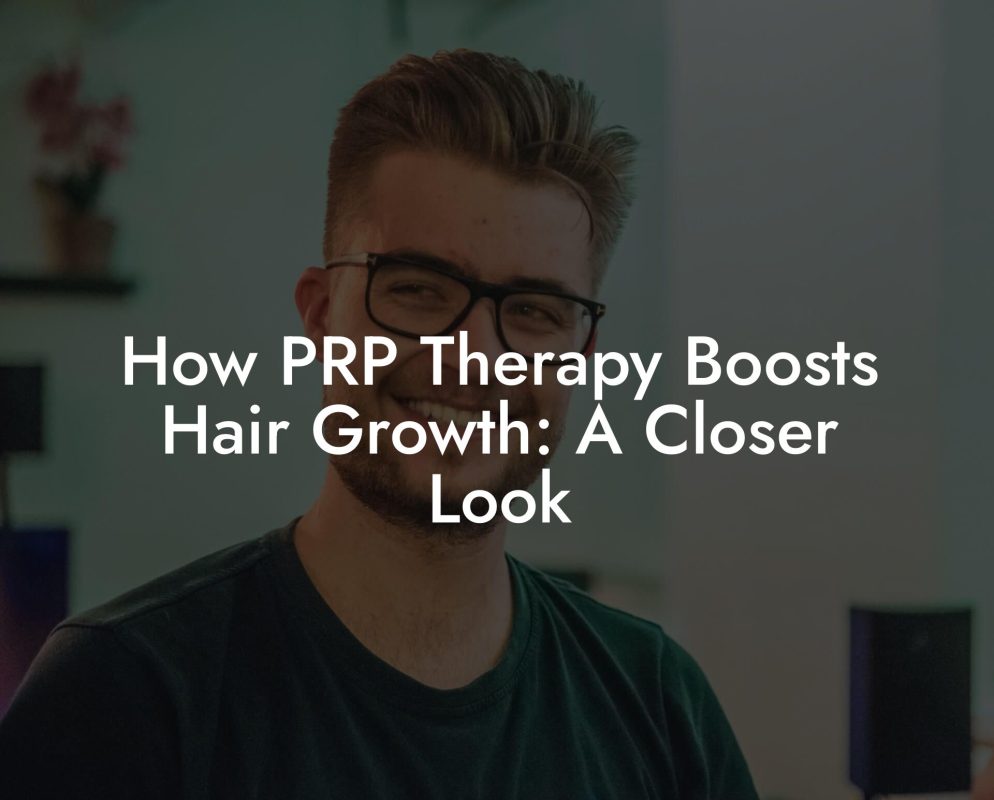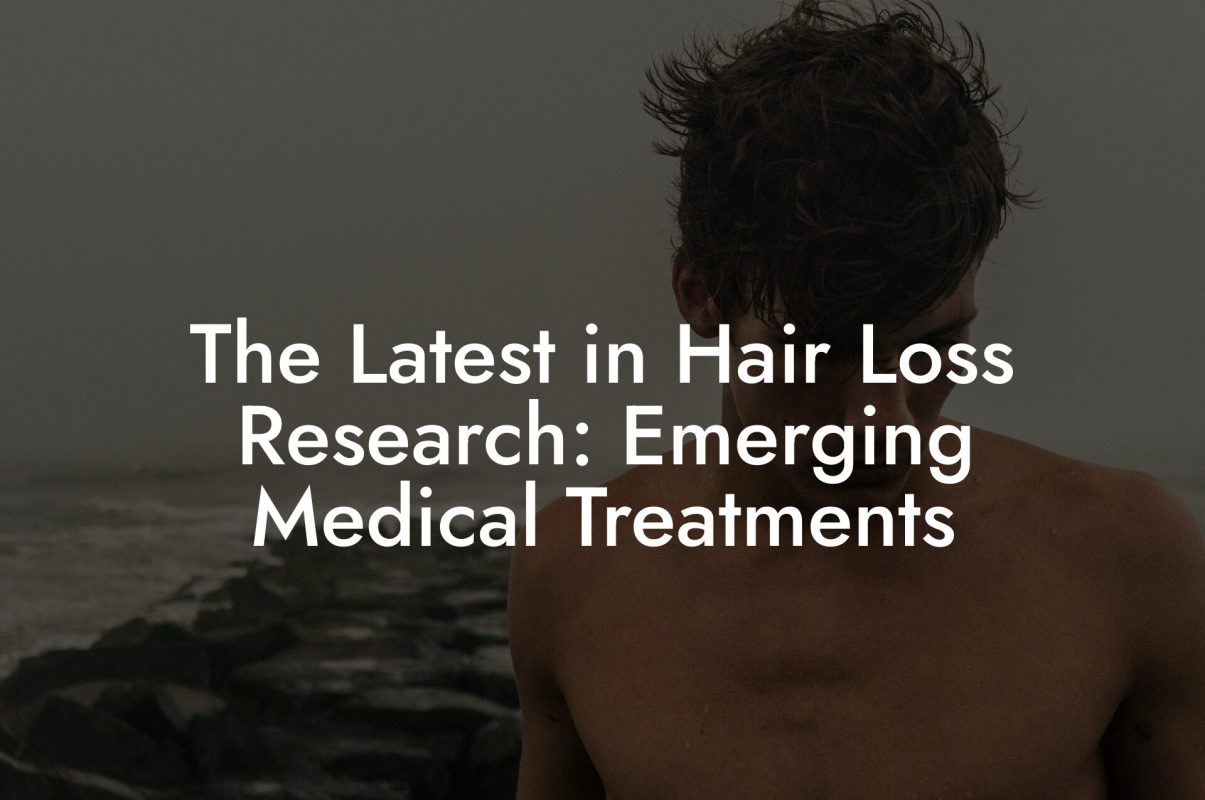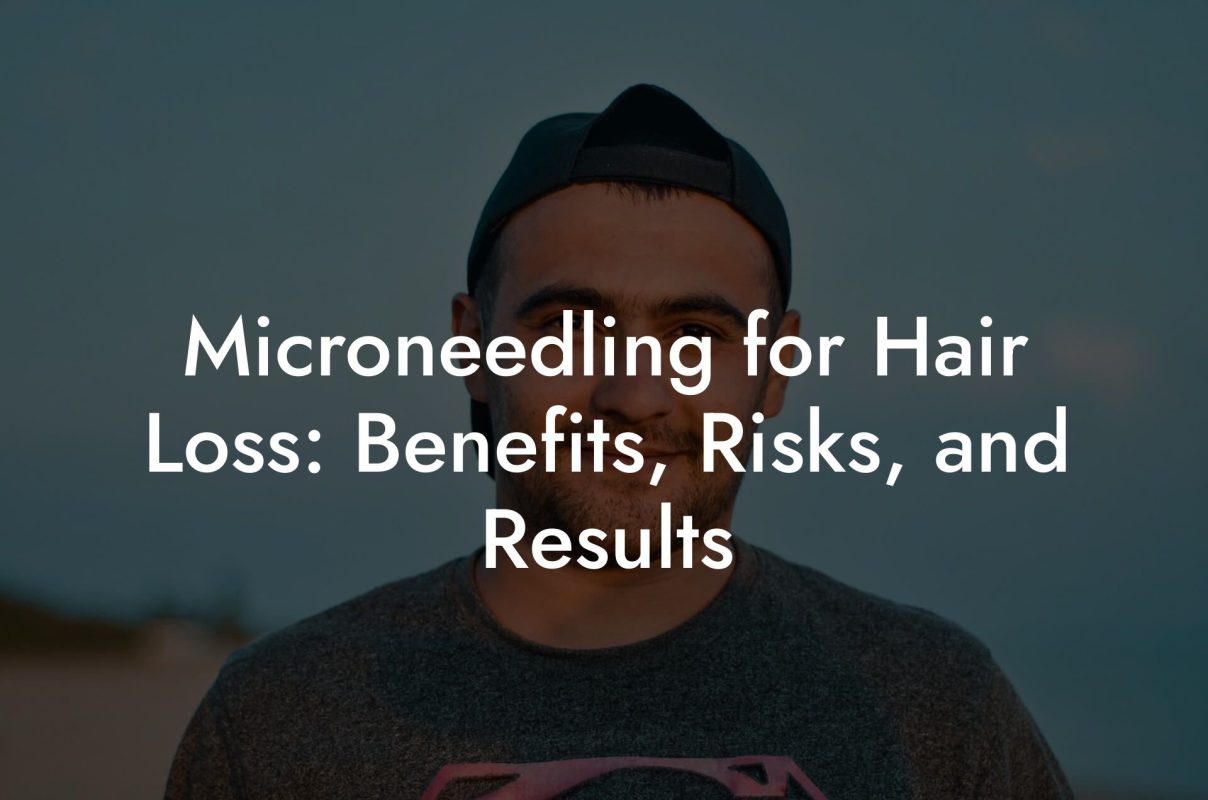Hair Loss Library
Platelet-Rich Plasma (PRP) Therapy: Is It the Answer to Hair Loss?
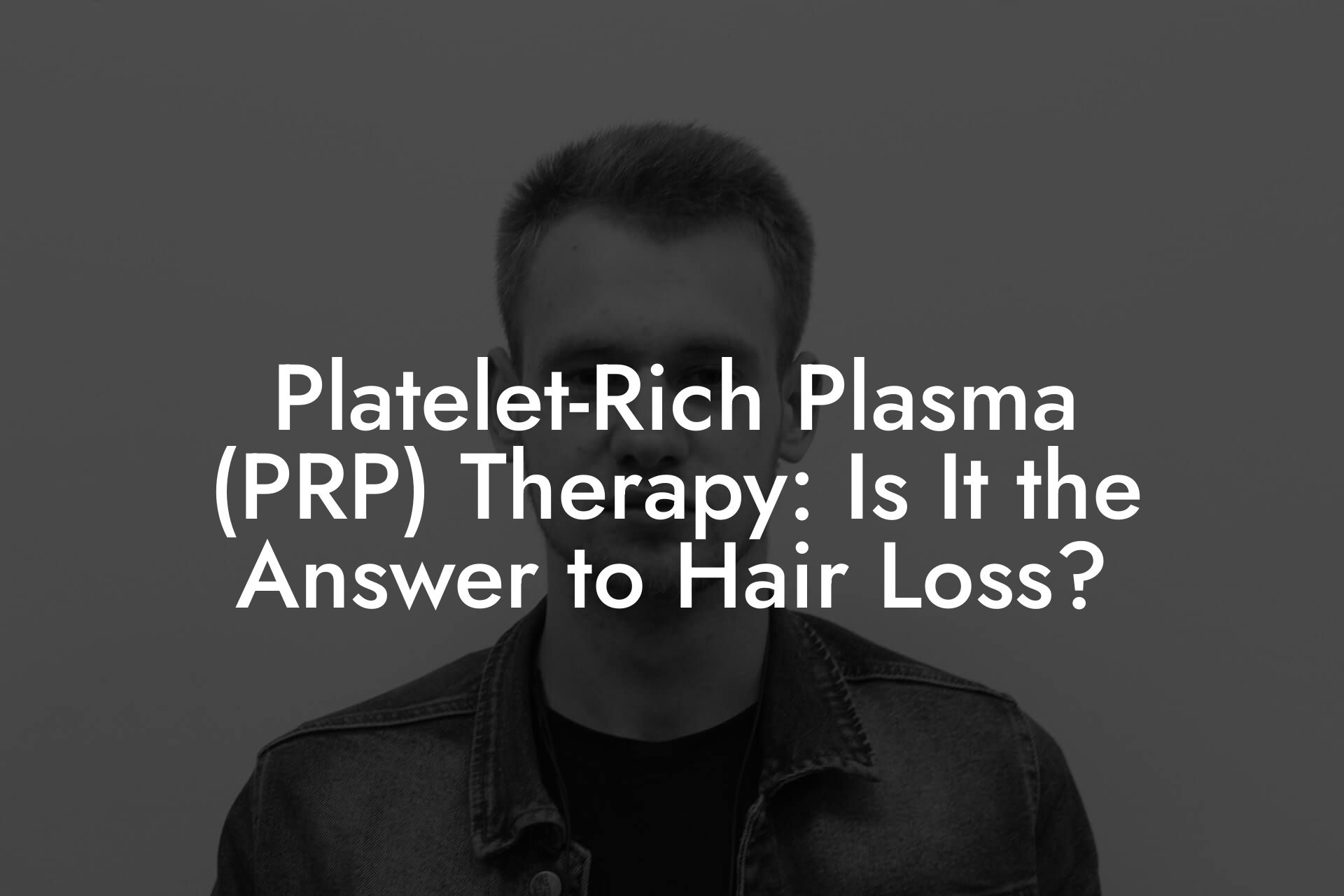
Picture this: you're scrolling through your feed when, suddenly, your hairline decides to pull a disappearing act. You wonder, “Is this a midlife crisis, or is my hair planning its own epic exit?” Enter Platelet-Rich Plasma (PRP) Therapy—a modern, buzz-worthy treatment that’s stirring up talk among millennials and Gen Z dudes battling hair loss. At Mane Matrix, we break down the science, hype, and real-deal results behind PRP so you can decide if it’s the miracle cure you’ve been waiting for, without any awkward, expensive consultations.
Cutting Through the Hype: What is PRP Therapy?
Platelet-Rich Plasma (PRP) Therapy sounds like something straight out of a sci-fi flick, but it’s very much a real-world treatment that’s catching on with men facing hair loss. Essentially, PRP is derived from your own blood. During a brief procedure, a small amount of your blood is drawn, spun in a centrifuge to concentrate those mighty platelets (tiny cells packed with growth factors), and then re-injected into your scalp. The idea? Jumpstart your hair follicles back to life by harnessing your body’s natural healing powers.
Think of it as a rejuvenating facial, but for your scalp—only instead of collagen, it’s all about stimulating dormant follicles. And the best part? Because it uses your own blood, you’re not introducing any foreign substances into your body. It’s like giving your hair a self-generated, high-octane energy boost.
Why PRP Therapy? The Science and the Swagger
The science behind PRP is both fascinating and straightforward. Your blood is loaded with platelets that release growth factors when activated. These factors are the unsung heroes in the healing process, reducing inflammation and stimulating cell growth. When injected into the scalp, these growth factors are believed to promote the regeneration of hair follicles and enhance hair growth. In simpler terms, it’s like rallying your own personal squad of microscopic cheerleaders ready to boost every follicle into action.
But don’t worry if you aren’t a science geek. Even if you only grasp the idea that PRP gives your scalp a “refresh button,” you’re on the right track. It’s all about reactivating your hair’s natural growth cycle, making your hairline stage a comeback story.
How Does PRP Therapy Work for Hair Loss?
PRP Therapy is a two-in-one deal: it involves both the extraction and concentration of your blood’s platelets and their reintroduction into your scalp. Here’s a step-by-step rundown:
- The Blood Draw: A sterile needle is used to draw a small sample of your blood. It’s quick, simple, and minimally invasive—think of it as that pinch your mom used to give you when you were little, but far less traumatic.
- Spinning the Magic: Your blood sample is placed in a centrifuge, a machine that separates the components of your blood. The result? A concentrated brew rich in platelets.
- Injection Time: The concentrated platelet mixture is carefully re-injected into targeted areas of your scalp where hair thinning or loss is evident. The process is typically painless, with only mild discomfort—a small price to pay for a shot at regaining a fuller mane.
During the procedure, many patients close their eyes and imagine epic movie montages of hair triumph. And while the scientific details are complex, the aim remains straightforward: revitalize and reactivate those sleepy hair follicles.
Who’s Eligible for PRP Therapy?
If you’re a millennial or Gen Z guy worried about your receding hairline or thinning patches, PRP Therapy might just be the answer. It’s typically recommended for:
- Early-Stage Hair Loss: Ideal if you’re starting to see spots where hair is less dense.
- Androgenetic Alopecia: The common genetic condition that leads to male pattern baldness.
- Postoperative Hair Loss: Some men experience hair loss after invasive scalp surgeries; PRP can help stimulate regrowth.
- Supplementary Treatment: PRP is often paired with other treatments like minoxidil or finasteride to enhance overall results.
However, if you have significant scarring or more advanced hair loss, PRP might be more of a complementary treatment rather than a standalone fix. Consulting a specialist is always a good idea to see if your hair (and wallet) will get the best bang for its buck.
The PRP Procedure: What to Expect
Let’s break down the procedure into bite-sized steps to demystify the process:
Before the Procedure
Consultation: Your journey kicks off with a consultation where a healthcare provider assesses your hair loss pattern, discusses your medical history, and determines if PRP is the right fit. During this phase, you might also chat about your lifestyle—because who doesn’t love a casual conversation about the latest memes alongside medical advice?
Pre-Treatment Prep: You might be advised to avoid certain medications that could affect blood clotting (like aspirin) a few days before your treatment. This is to ensure that your blood’s natural concentration remains undisturbed.
During the Procedure
Grab a Cup of Confidence: Sit back in the treatment chair (or lie down—whatever floats your boat) as a professional draws your blood. Then, the centrifuge goes to work, separating the platelets from the rest of your blood.
The Injection: Next, the freshly concentrated PRP is injected into your scalp using fine needles. Locals of mild discomfort might be present, but many patients describe it more as a gentle tickle rather than an excruciating pain. Plus, your scalp gets the VIP treatment it deserves.
After the Procedure
Recovery and Care: After your appointment, you’ll receive guidelines on caring for your scalp. This might include avoiding intense activities, sun exposure, or washing your hair too vigorously for a bit. Think of it as giving your scalp the spa day it truly deserves.
Results Timeline: Hair regrowth isn’t instant—patience is key. While some men notice initial improvements within three to four months, most see optimal results after several sessions and sustained maintenance treatments over the following year.
Overall, the process is quick, virtually painless, and fits easily into your busy life—no elaborate recovery time or dramatic lifestyle changes required.
PRP vs. Traditional Hair Loss Treatments: The Great Debate
In the epic battle between PRP and traditional treatments, the choice often comes down to what you’re comfortable with and what fits your unique situation. Let’s compare the two:
Traditional Treatments
Minoxidil and Finasteride: These are the bread-and-butter treatments for hair loss. Minoxidil is a topical solution that helps stimulate hair growth, while finasteride is an oral medication that targets hormonal imbalances. They’re well-researched and effective for many, but they do come with potential side effects such as skin irritation or sexual dysfunction.
Hair Transplant Surgery: For more advanced hair loss, surgical transplants can redistribute hair to thinning areas. This is a more invasive option that offers dramatic results but comes with higher costs, longer recovery times, and the potential for post-operative complications.
PRP Therapy
PRP stands out because it’s minimally invasive with a natural twist—using your own blood. The benefits include:
- Few Side Effects: Since your blood is used, the risk of allergic reactions or complications is very low.
- Stimulates Natural Growth: It works by activating your own hair follicles, tapping into the body’s innate healing process.
- No Downtime: The treatment is quick, and you can get back to your daily hustle almost immediately.
PRP is not necessarily a replacement for traditional treatments but rather a promising option that can work in synergy with them. Many opt to combine PRP sessions with medications to enhance overall results.
Backing It Up: Research and Real-World Results
The jury is still out on whether PRP is a miracle cure for every dude facing hair loss, but early research and testimonials are showing promise. Several studies have reported that PRP injections can lead to increased hair density, thicker hairs, and improved follicular health over time.
One study even noted that patients receiving PRP experienced a statistically significant increase in hair count compared to those who did not. Although results can vary, many men report noticeable improvements within four to six months—a timeline that resonates well with our generation’s love for progress and instant gratification (almost).
Real-world success stories abound. Guys who were skeptical at first now share their journeys on social media and hair loss forums, highlighting not just improved hair growth but also a boosted sense of self-confidence. PRP is emerging as a trend that’s not just about vanity—it’s about owning your look and feeling great in your skin.
Risks, Considerations, and What to Ask Your Specialist
While PRP Therapy has a lot of upsides, no treatment is without its risks. Let’s break down what you need to know before diving in:
Potential Side Effects
Most men experience minimal side effects, which might include minor swelling, redness, or tenderness at the injection sites—usually fleeting and resolving on their own. Because the treatment uses your own blood, the risk of adverse reactions is low. Still, every body is different, so it’s important to monitor how you feel and report any unusual symptoms to your provider.
Who Might Not Be a Good Candidate?
PRP isn’t a one-size-fits-all remedy. It may not be advisable for:
- Men with certain blood disorders or clotting abnormalities.
- Individuals with active skin infections or severe chronic illnesses.
- Those experiencing significant scarring or completely inactive follicles.
Always ensure you have a detailed consultation with a specialist who can gauge whether PRP is likely to yield the desired results for you.
What to Ask Your Specialist
To ensure you’re getting the best advice and treatment, have a list of questions ready:
- How many sessions will I need before I see noticeable results?
- What post-treatment care should I follow?
- How does PRP complement any other hair loss medications or treatments?
- What specific results can I realistically expect based on my hair loss baseline?
Being informed and proactive is key—the more you know, the better you can tailor the treatment to your lifestyle and expectations.
Cost, Commitment, and the Long-Term Game
Let’s talk money—because no one wants to invest in a treatment without knowing what’s at stake. PRP Therapy typically requires a series of sessions to yield optimal results, often spaced about one month apart, with maintenance sessions recommended every 4-6 months thereafter.
While costs can vary widely depending on where you live and the provider you choose, PRP is generally seen as a cost-effective alternative to more invasive surgical options. Many men find that when the treatment is combined with other therapies, the overall expense is justified by the boost in confidence and the potential for long-term savings compared to the cost of continual use of medications.
It’s essential to consider PRP as a part of a holistic approach to hair restoration—a long-term commitment to rejuvenation rather than a quick fix. Think of it as investing in your self-confidence portfolio.
Mixing It Up: Combining PRP with Other Hair Loss Solutions
One of the cooler things about PRP Therapy is its versatility. It can be an excellent standalone treatment, yet it also works hand-in-hand with other hair loss solutions. Many specialists recommend pairing PRP with:
- Topical Treatments: Minoxidil remains a popular option to help maintain and boost hair growth.
- Prescription Medications: Finasteride can help manage hormonal factors contributing to hair loss.
- Laser Therapy: Low-level laser therapy (LLLT) is believed to improve cellular activity at the scalp, enhancing the effects of PRP.
The idea is to create a synergistic approach where every treatment plays a specific role. PRP provides the natural boost, while other therapies maintain the momentum. This dynamic duo (or trio!) can be customized according to your unique hair loss challenges.
Remember, hair restoration is often about layering treatments to maximize benefits—like building the ultimate hair care routine that even your most discerning millennial or Gen Z friend would envy.
Personal Stories: Real Experiences with PRP Therapy
Words can only convey so much, so let’s dive into some real-life experiences from guys who’ve taken the PRP path:
The Comeback Kid
Mark, a 32-year-old software developer, noticed early signs of thinning hair during his college years. After years of trying various products and feeling bummed by his receding hairline, he decided to try PRP Therapy. After a few sessions, Mark noticed an improvement in hair thickness and a rekindled sense of confidence. “It’s like I hit the refresh button on my scalp,” he jokes, crediting PRP for giving him a renewed positive outlook.
From Skepticism to Advocacy
Then there’s Jake—a 28-year-old fitness enthusiast who was initially skeptical of PRP. Convinced that his strict workout and diet regimens could handle his hair loss, he eventually decided to supplement his efforts with PRP after noticing little improvement. “Now, my hair is as pumped as I am after leg day,” he quips. For Jake, PRP provided that extra edge in a routine that already prioritized health and aesthetics.
Embracing the Natural Approach
Lastly, Alex, a 35-year-old graphic designer with a penchant for all things natural and organic, was drawn to PRP’s use of his own body’s resources. Alex loves that his treatment wasn’t filled with chemicals or synthetic fillers. With consistent PRP sessions, he’s seen a noticeable improvement in hair density. “I feel like I’m working with a partner that knows my scalp better than I do,” he remarks, highlighting the personal touch that PRP provides.
These stories represent just a slice of the experiences men have had with PRP Therapy. They’re not just about hair regrowth; they’re about regaining confidence, tackling insecurities, and embracing a treatment that aligns with your lifestyle and values.
Resources and Community Support: Your Next Steps
If you’re intrigued by PRP Therapy and wondering how to take the next step, our Mane Matrix community is here to help. We believe that the journey to reclaiming your hair—and by extension, your confidence—should be supported by genuine expert advice and a community that gets it.
Online Forums and Social Media Groups: Join platforms where guys share their firsthand experiences. Whether it’s Reddit threads, Facebook groups, or Instagram reels, there’s a wealth of support out there.
Expert Consultations: Even if you’re wary of in-person appointments, many specialists now offer virtual consultations. This handy option lets you discuss PRP Therapy and its suitability for your hair loss challenges from the comfort of your home.
Educational Content: Dive into blog posts, podcasts, and webinars that break down the science behind PRP, demystify the process, and provide up-to-date research. Knowledge is power, and the more you learn, the better you can make an informed decision.
Local Clinics and Hair Restoration Centers: If you’re ready to take the plunge, research local clinics that offer PRP Therapy. Look for reviews, before-and-after photos, and recommendations from other men who have had similar experiences.
Community Events: Some organizations host local events or webinars focused on hair restoration techniques. Keep an eye out for these—they’re a great way to connect with professionals and peers who share your hair journey narrative.
Taking this step is all about empowerment. With the right resources and a supportive network, you can confidently explore PRP Therapy as part of your personalized hair restoration plan.
DIY Myths & Facts: Separating Hair-Losing Fiction from PRP Truth
In a world rife with at-home remedies and hair growth potions promising miraculous results, PRP Therapy stands out as a medically backed treatment with real evidence. Let’s debunk some common myths:
Myth 1: “A bottle of miracle oil will fix my hairline overnight.”
Fact: While herbal oils and over-the-counter products might offer temporary shine or hydration, they often fall short in stimulating actual hair regrowth at the follicular level. PRP, on the other hand, targets the growth process by activating your body’s own resources.
Myth 2: “PRP is just a fad—like avocado toast.”
Fact: Though it may seem trendy, PRP Therapy is grounded in established medical practices and ongoing research. It’s not a passing fad; its success in various fields (from orthopedics to dermatology) underscores its credibility.
Myth 3: “I can DIY the entire PRP process at home.”
Fact: As cool as it might sound, extracting and concentrating your own platelets isn’t a DIY project. The precision and sterile environment required make this a procedure best left to trained professionals.
Understanding the facts helps you cut through the noise and focus on treatments that work. PRP Therapy, with its blend of science and natural biology, stands out as a genuine option for those fighting hair loss.
Building a Future with Confidence
At the end of the day, the decision to embrace PRP Therapy is deeply personal. It’s not just about regaining hair—it’s about reclaiming confidence, setting new benchmarks for self-care, and taking control of your destiny. Every session is a step towards a future where your hair and self-assurance are on point.
With a blend of modern science, natural healing, and a supportive community behind you, there’s every reason to believe that PRP Therapy could be the next big thing in your hair restoration journey. So whether you're aiming to reverse early hair loss or simply boost your current regimen, exploring all aspects of PRP might just unlock the vibrant, confident you that’s ready to make an epic comeback.
Remember, a lush head of hair isn’t just a style statement—it’s a symbol of self-care and empowerment. Step into this journey armed with information, backed by research, and enriched by real experiences. Your future self will thank you for taking the leap.
Frequently Asked Questions About PRP Therapy for Hair Loss
Dive into these FAQs to clear up any lingering questions about PRP Therapy and its role in combating hair loss.
1. What Exactly Is PRP Therapy?
PRP Therapy involves drawing a small amount of your blood, processing it to concentrate the platelets, and re-injecting that concentrated plasma into your scalp to stimulate hair growth.
2. How Soon Can I Expect Results?
Most patients begin to notice improvements between three to four months post-treatment, with optimal results usually observed after a series of sessions.
3. Is the Procedure Painful?
The process is minimally invasive and only mildly uncomfortable—comparable to a quick pinch during the injection phase.
4. Can PRP Be Combined with Other Treatments?
Absolutely. PRP often works best when used alongside traditional treatments like minoxidil or finasteride, and even laser therapy, to enhance overall hair growth.
5. What Are the Side Effects?
Side effects are rare and usually minor, including temporary redness, swelling, or tenderness at the injection site.
6. How Many Sessions Will I Need?
The number of sessions varies by individual, but many patients start with a few sessions spaced a month apart, followed by periodic maintenance treatments.
7. Is PRP Suitable for Advanced Hair Loss?
PRP tends to be most effective for early to moderate hair loss. In cases of extensive scarring or advanced baldness, it’s often used as part of a broader treatment plan.
8. Who Should I Talk To About PRP Therapy?
A qualified hair restoration specialist or dermatologist can evaluate your condition and help determine if PRP Therapy is right for you.
Your New Chapter: Embrace a Future with Confidence and Fuller Hair
Stepping into the world of PRP Therapy is more than opting for a haircut miracle—it’s about taking charge of your self-image and empowering yourself against the challenges that hair loss can present. With a treatment rooted in your own biology and supported by modern science, you’re not just fighting hair loss—you’re embracing a more confident, authentic version of yourself.
Whether you decide to incorporate PRP into your routine as a standalone method or blend it with other clinically-proven treatments, know that every step you take is a celebration of self-care and personal growth. In a world that thrives on individuality and innovation, there’s no one-size-fits-all answer. Instead, there’s a personalized journey waiting for you—a journey where each session is a step toward unlocking a fuller, healthier head of hair and a brighter, more confident tomorrow.
Dive into the conversation, explore your options, and trust that with the right blend of science, technology, and natural healing, you can redefine what hair loss means for you. The future is yours to create—one vibrant follicle at a time.
At Mane Matrix, we're committed to delivering expert insights and genuine support for men ready to reclaim their crown. So, gear up, take the plunge, and step into a future where your hair—and your confidence—shine as brightly as your forward-thinking spirit.
If you loved this article... Dive deeper into the world of mens hair loss with our most popular sections. If there is anything you think is missing or anything you would love for us to write about, just give us a shout.
Prescription Solutions: The Best Medications for Men’s Hair Loss
Minoxidil & Beyond: Exploring Topical Treatments for Hair Regrowth
How Finasteride Works: The Science Behind This Hair Loss Blocker
Platelet-Rich Plasma (PRP) Therapy: Is It the Answer to Hair Loss?
Hair Transplant 101: A Beginner’s Guide for Men
Exploring Laser Therapy: Non-Invasive Options for Hair Regrowth
The Pros and Cons of Oral Hair Loss Medications
New Frontiers in Hair Loss Treatment: Stem Cell Therapy Explained
Surgical vs. Non-Surgical: Which Hair Loss Treatment Is Right for You?
Understanding Combination Therapy for More Effective Hair Regrowth
How to Choose the Right Hair Loss Clinic: Expert Tips
Exploring Off-Label Treatments: What’s Worth Trying for Hair Loss?
Managing Side Effects: What to Expect from Hair Loss Medications
The Latest in Hair Loss Research: Emerging Medical Treatments
Microneedling for Hair Loss: Benefits, Risks, and Results
How PRP Therapy Boosts Hair Growth: A Closer Look
The Role of DHT in Hair Loss and How Medications Counteract It
Customized Treatment Plans: Tailoring Hair Loss Solutions for You
Understanding Clinical Trials: How New Hair Loss Treatments Are Tested
Breaking Down the Cost of Hair Loss Treatments: Is It Worth It?
How to Prepare for a Hair Transplant: A Step-by-Step Guide
Post-Treatment Care: Maximizing Results After Hair Loss Procedures
A Doctor’s Perspective: When to Consider Medical Hair Loss Treatments
Success Stories: Real Men Share Their Hair Restoration Journeys
The Future of Medical Hair Loss Solutions: Trends to Watch





